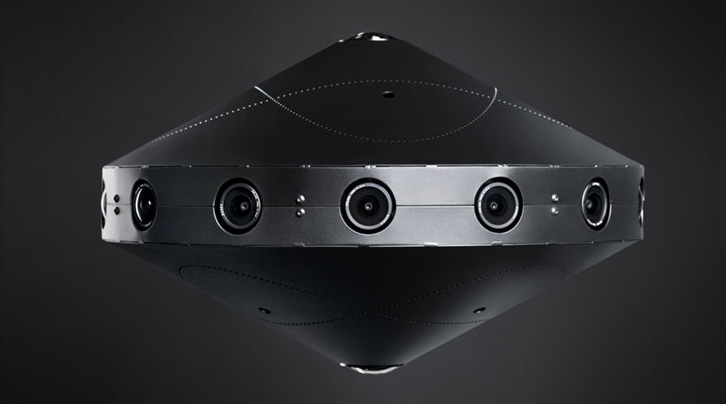- Facebook 360-Degree video camera has designed and built a durable, high-quality 3D-360 video capture system.
- The system includes a design for camera hardware and the accompanying stitching code, and we will make both available on GitHub this summer. We’re open-sourcing the camera and the software to accelerate the growth of the 3D-360 ecosystem — developers can leverage the designs and code, and content creators can use the camera in their productions.
- Building on top of an optical flow algorithm is a mathematically rigorous approach that produces superior results. Our code uses optical flow to compute left-right eye stereo disparity. We leverage this ability to generate seamless stereoscopic 360 panoramas, with little to no hand intervention.
- The stitching code drastically reduces post-production time. What is usually done by hand can now be done by algorithm, taking the stitching time from weeks to overnight.
- The system exports 4K, 6K, and 8K video for each eye. The 8K videos double industry standard output and can be played on Gear VR with Facebook’s custom Dynamic Streaming technology.
At its F8 developer conference on Tuesday Facebook plans to unveil part of its plan to do just that: A new camera specifically for filming 360-degree videos, the kind of video that lets you pan or rotate within a scene so you can get a full 360-degree perspective.
Facebook is into all kinds of video content, not just 360-degree video. It’s also making a big push into live video,paying celebrities and media companies to use it new live video feature and putting the tool front and center in its main Facebook app in hopes more people will use it.
You can’t actually buy this camera anywhere. That’s because Facebook isn’t mass producing or selling the camera to the public. Instead, it’s open sourcing the camera’s specs and design, meaning the info needed to build the camera will be available to the public so that anyone with the time and money could build it on their own.
So why would Facebook build a fancy 360-degree video camera and hand over the blueprints? Because Facebook has no interest in mass producing another piece of hardware. It wants 360-degree video content, but it doesn’t need to manufacture a camera to get it. It just needs to show others how to make the camera instead.



